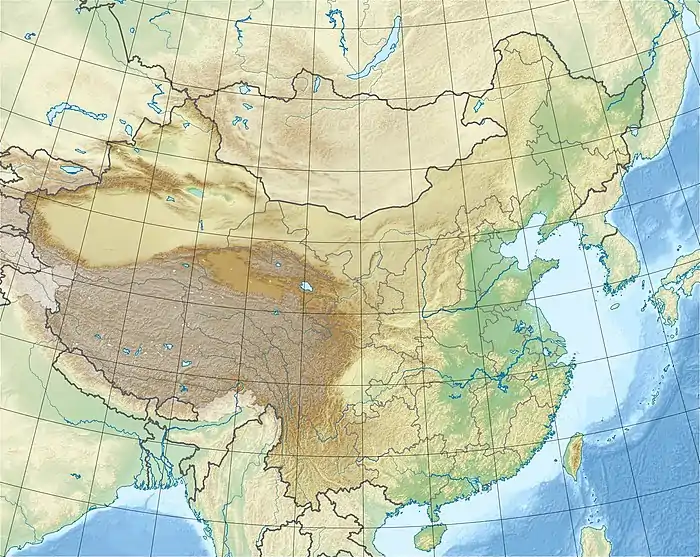 Location in China | |
| Location | Hunan |
|---|---|
| Region | Southern China |
| Coordinates | 25°36′24″N 111°28′58″E / 25.60667°N 111.48278°E |
| Length | 6 to 8 m (20 to 26 ft)[1] |
| Width | 12 to 15 m (39 to 49 ft)[1] |
| Area | 46 m2 (495 sq ft)[1] |
| Height | 5 m (16 ft)[1] |
| History | |
| Material | limestone Karst |
| Founded | 21,000 BP |
| Abandoned | 13,800 BP |
| Periods | Paleolithic China |
Yuchanyan is an early Neolithic cave site in Dao County (Daoxian), Hunan, China. The site yielded sherds of ceramic vessels and other artifacts which were dated by analysis of charcoal and bone collagen, giving a date range of 17,500 to 18,300 years old for the pottery.[2] The pottery specimens may be the oldest known examples of pottery.[3]
The cave yielded fragmentary remains of 2 or more ceramic vessels, in addition to large amounts of ash, a rich animal bone assemblage, cobble and flake artifacts, bone tools, and shell tools. The artifacts indicate that the cave was a Late Paleolithic foragers' camp. Here we report on the radiocarbon ages of the sediments based on analyses of charcoal and bone collagen. The best-preserved charcoal and bone samples were identified by prescreening in the field and laboratory. The dates range from around 21,000 to 13,800 cal BP. The age of the ancient pottery ranges between 18,300 and 15,430 cal BP. Charcoal and bone collagen samples located above and below one of the fragments produced dates of around 18,000. These ceramic potsherds therefore provide some of the earliest evidence for pottery making in China.
References
- 1 2 3 4 Liu, Li; et al. (2012). The Archaeology of China: From the Late Paleolithic to the Early Bronze Age. Cambridge University Press.
- ↑ Boaretto, E.; et al. (2009). "Radiocarbon dating of charcoal and bone collagen associated with early pottery at Yuchanyan Cave, Hunan Province, China". Proceedings of the National Academy of Sciences. 106 (24): 9537–9538. Bibcode:2009PNAS..106.9595B. doi:10.1073/pnas.0900539106. PMC 2689310. PMID 19487667.
- ↑ 'Oldest pottery' found in China